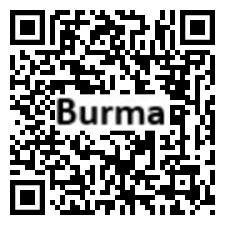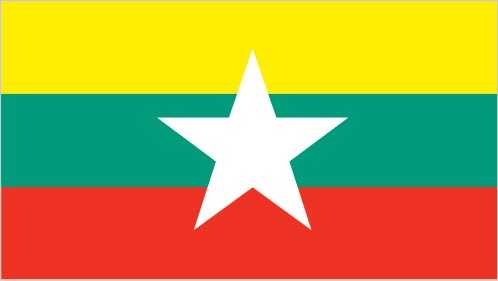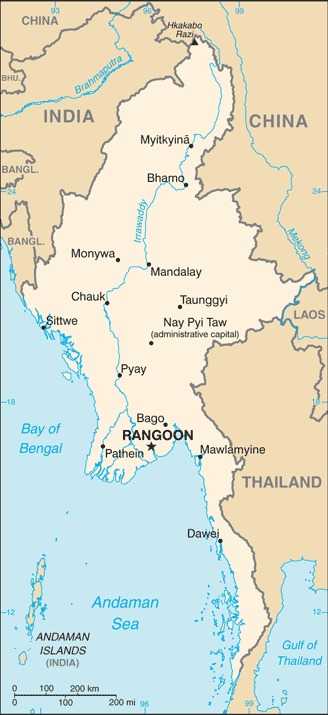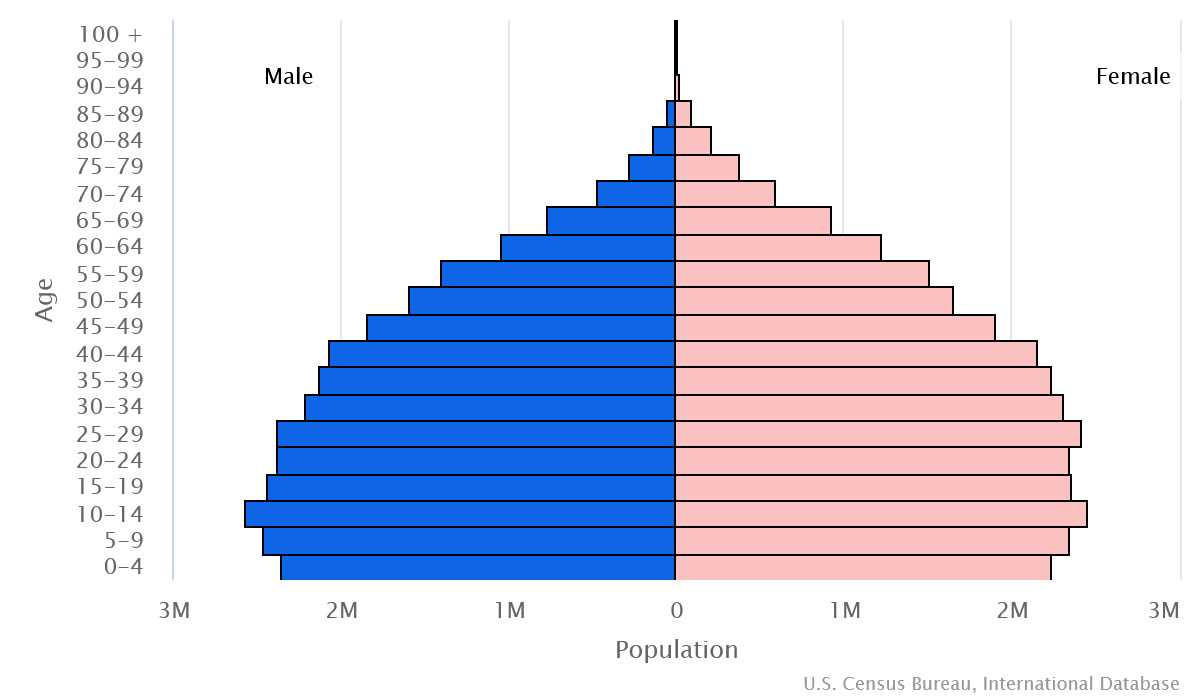Introduction
Background
Burma was a province of British India until 1937 and then a self-governing colony until independence in 1948. The military traditionally has been heavily involved in domestic politics and the national economy and ran the country for five decades after a military coup in 1962. A brief period of economic and political reform saw the election of a civilian government in 2015, but the military overthrew it in 2021 and largely reversed the nascent reforms. The country has been mired in an insurgency against the military regime since 2021.
Geography
Area
total : 676,578 sq km
land: 653,508 sq km
water: 23,070 sq km
Climate
tropical monsoon; cloudy, rainy, hot, humid summers (southwest monsoon, June to September); less cloudy, scant rainfall, mild temperatures, lower humidity during winter (northeast monsoon, December to April)
Natural resources
petroleum, timber, tin, antimony, zinc, copper, tungsten, lead, coal, marble, limestone, precious stones, natural gas, hydropower, arable land
People and Society
Population
total: 57,527,139
Ethnic groups
Burman (Bamar) 68%, Shan 9%, Karen 7%, Rakhine 4%, Chinese 3%, Indian 2%, Mon 2%, other 5%
Languages
Burmese (official)
Religions
Buddhist 87.9%, Christian 6.2%, Muslim 4.3%, Animist 0.8%, Hindu 0.5%, other 0.2%, none 0.1% (2014 est.)
Population growth rate
0.71% (2024 est.)
Government
Government type
military regime
Capital
name: Rangoon (aka Yangon, continues to be recognized as the primary Burmese capital by the US Government); Nay Pyi Taw is the administrative capital
Executive branch
chief of state: Prime Minister, State Administration Council Chair, Sr. Gen. MIN AUNG HLAING (since 1 August 2021)
head of government: Prime Minister, State Administration Council Chair, Sr. Gen. MIN AUNG HLAING (since 1 August 2021)
Legislative branch
description: dissolved 1 February 2021 by the coup led by Sr. General MIN AUNG HLAING; previously bicameral Assembly of the Union or Pyidaungsu consists of:
House of Nationalities or Amyotha Hluttaw, (224 seats; 168 members directly elected in single-seat constituencies by absolute majority vote with a second round if needed and 56 appointed by the military; members serve 5-year terms)
House of Representatives or Pyithu Hluttaw, (440 seats, currently 433; 330 members directly elected in single-seat constituencies by simple majority vote and 110 appointed by the military; members serve 5-year terms); note - on 1 February 2021, the military dissolved the Assembly of the Union, which was replaced by the State Administration Council
Economy
Economic overview
prior to COVID-19 and the February 2021 military coup, massive declines in poverty, rapid economic growth, and improving social welfare; underdevelopment, climate change, and unequal investment threaten progress and sustainability planning; since coup, foreign assistance has ceased from most funding sources
Real GDP (purchasing power parity)
$290.507 billion (2023 est.)
$287.624 billion (2022 est.)
$276.462 billion (2021 est.)
Real GDP per capita
$5,300 (2023 est.)
$5,300 (2022 est.)
$5,100 (2021 est.)
Agricultural products
rice, sugarcane, vegetables, beans, maize, groundnuts, fruits, plantains, coconuts, onions (2022)
Industries
agricultural processing; wood and wood products; copper, tin, tungsten, iron; cement, construction materials; pharmaceuticals; fertilizer; oil and natural gas; garments; jade and gems
Exports
$20.4 billion (2021 est.)
$17.523 billion (2019 est.)
$15.728 billion (2018 est.)
Exports - partners
China 36%, Thailand 13%, Germany 6%, Japan 6%, US 4% (2022)
Exports - commodities
garments, precious stones, natural gas, dried legumes, rice (2022)
Imports
$23.1 billion (2021 est.)
$17.356 billion (2019 est.)
$18.664 billion (2018 est.)
Imports - partners
China 45%, Thailand 16%, Singapore 14%, Malaysia 4%, Indonesia 4% (2022)
Imports - commodities
refined petroleum, fabric, synthetic fabric, crude petroleum, fertilizers (2022)
Exchange rates
kyats (MMK) per US dollar -
Page last updated: Wednesday, July 24, 2024




